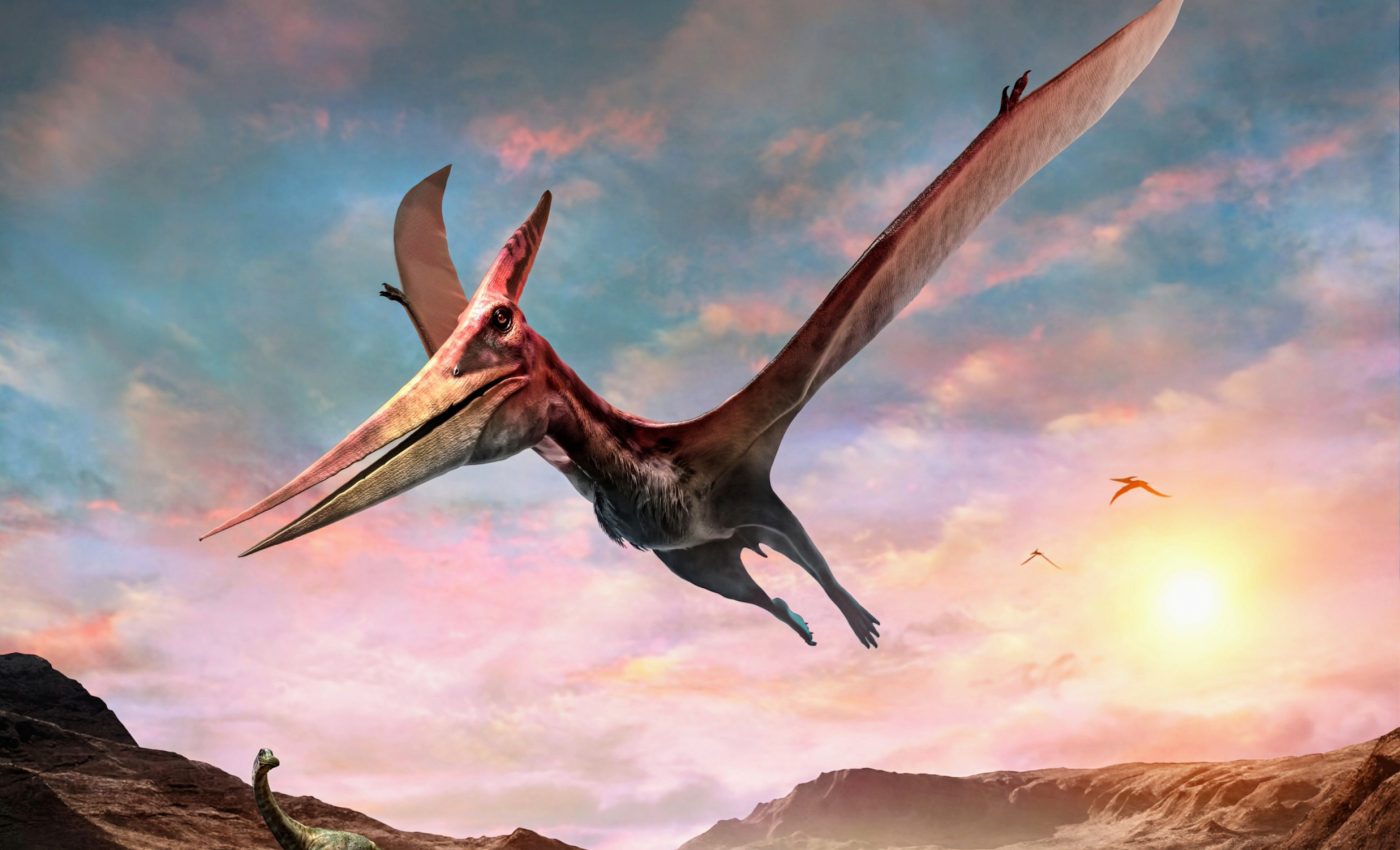
Pterosaurs mastered land before dominating the sky
Long before the skies of the Mesozoic era (252 – 66 million years ago) became the domain of some of history’s most remarkable flyers, pterosaurs were already captivating creatures. These winged vertebrates didn’t just rule the skies; they also thrived on land in unexpected ways.
Yes, you read that right – pterosaurs were adept at terrestrial living. A new study sheds light on a fascinating twist in their evolutionary journey.
The ability of pterosaurs to adapt to life on land was instrumental in their transformation into massive aerial giants, with wingspans reaching up to 10 meters.
This research, carried out by paleontologists at the University of Leicester’s Centre for Palaeobiology and Biosphere Evolution, closely examines the structure of pterosaurs’ hands and feet to unravel their surprising story.
It all started with tree climbing
“Early pterosaurs were highly specialized for climbing, with extreme modifications in their hands and feet, similar to those found in climbing lizards and birds like woodpeckers today,” said lead researcher Robert Smyth from the University of Leicester.
“Clinging to vertical surfaces by your fingertips for long periods is hard work – it’s a lot easier for small, lightweight animals.”
Consequently, these early pterosaurs were likely restricted to arboreal habitats and consequently, small body sizes.
Life of pterosaurs on land
Everything changed during the Middle Jurassic period. The hands and feet of pterosaurs underwent a drastic transformation, resembling more those of ground-dwelling animals.
This shift opened up a whole new world of ecological opportunities, empowering them with a range of feeding strategies.
“These findings underscore the need to examine all aspects of pterosaur locomotion, not just flight, to fully understand their evolution. That pterosaurs could fly is only one part of their story,” said Smyth.
“By exploring how they lived in the trees or on the ground, we can begin to understand the roles that they played in ancient ecosystems.”
Evolution of pterosaur bones
Details of the pterosaur’s hands and feet were crucial to this transformative process. Early pterosaurs had short bones at the base of their fingers and toes, ideal for climbing trees.
However, as evolution spun its web, their structural pattern reversed – base bones grew longer, while the farther ones shortened. Their claws also became flatter and less curved, suggesting better adaptation for walking.
Pterosaurs’ mobility on land
With the ground already brimming with dinosaurs and other reptiles, it was a clever game of competition avoidance that led pterosaurs to exploit ecological niches that required both flying and walking abilities.
“In early pterosaurs the hind limbs were connected by a flight membrane which severely impeded walking and running. In later, more advanced pterosaurs, this membrane became separated along the midline, allowing each hind limb to move independently,” noted Dr. David Unwin from the University of Leicester.
“This was a key innovation that, combined with changes to their hands and feet, greatly improved pterosaurs’ mobility on the ground.”
Diverse ways of life
The ability to adapt ultimately freed pterosaurs from the constraints of climbing, allowing them to grow into massive sky creatures.
At the same time, such evolution brought forth some bizarre feeding strategies. One such feature resulted in hundreds of fine, needle-like teeth for filter-feeding – resembling the feeding method of modern flamingos, a good 120 million years prior to the first flamingos’ evolution.
All in all, this exciting discovery provides a more complete picture of the diverse ways of life that pterosaurs enjoyed, from tree-top dwellers to ground explorers and eventually, giants of the sky.
Rethinking pterosaur evolution
This new understanding of pterosaur terrestrial locomotion sheds light on the broader factors behind their evolutionary success.
Moving beyond their aerial abilities, it becomes clear that these ancient reptiles adapted to diverse ecosystems, mastering both the skies and the ground. This dual capability likely contributed to their remarkable resilience and longevity throughout the Mesozoic era.
By exploring how pterosaurs thrived across various environments, researchers are beginning to see a more complete picture of their evolutionary journey.
Such findings also inspire further investigation into other prehistoric creatures that might have displayed similarly unexpected adaptations.
As we uncover more about these ancient worlds, it’s clear that evolution often involves surprising strategies that help species overcome the challenges of their time.
The study is published in the journal Current Biology.
—–
Like what you read? Subscribe to our newsletter for engaging articles, exclusive content, and the latest updates.
Check us out on EarthSnap, a free app brought to you by Eric Ralls and Earth.com.
—–













